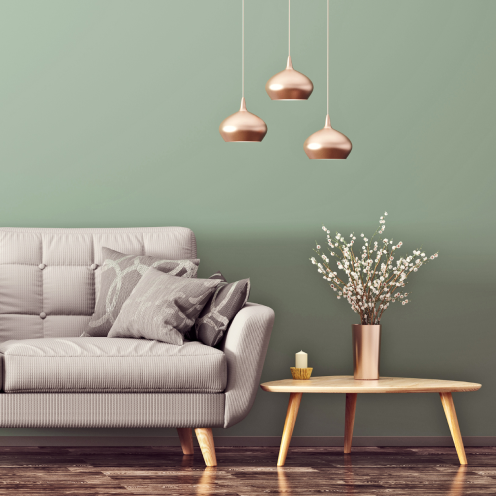
The Independent's journalism is supported by our readers. When you purchase through links on our site, we may earn commission. Why trust us?
10 best indoor house plants to spruce up your living space
Turn your home into a jungle with our pick of succulents, palms and more
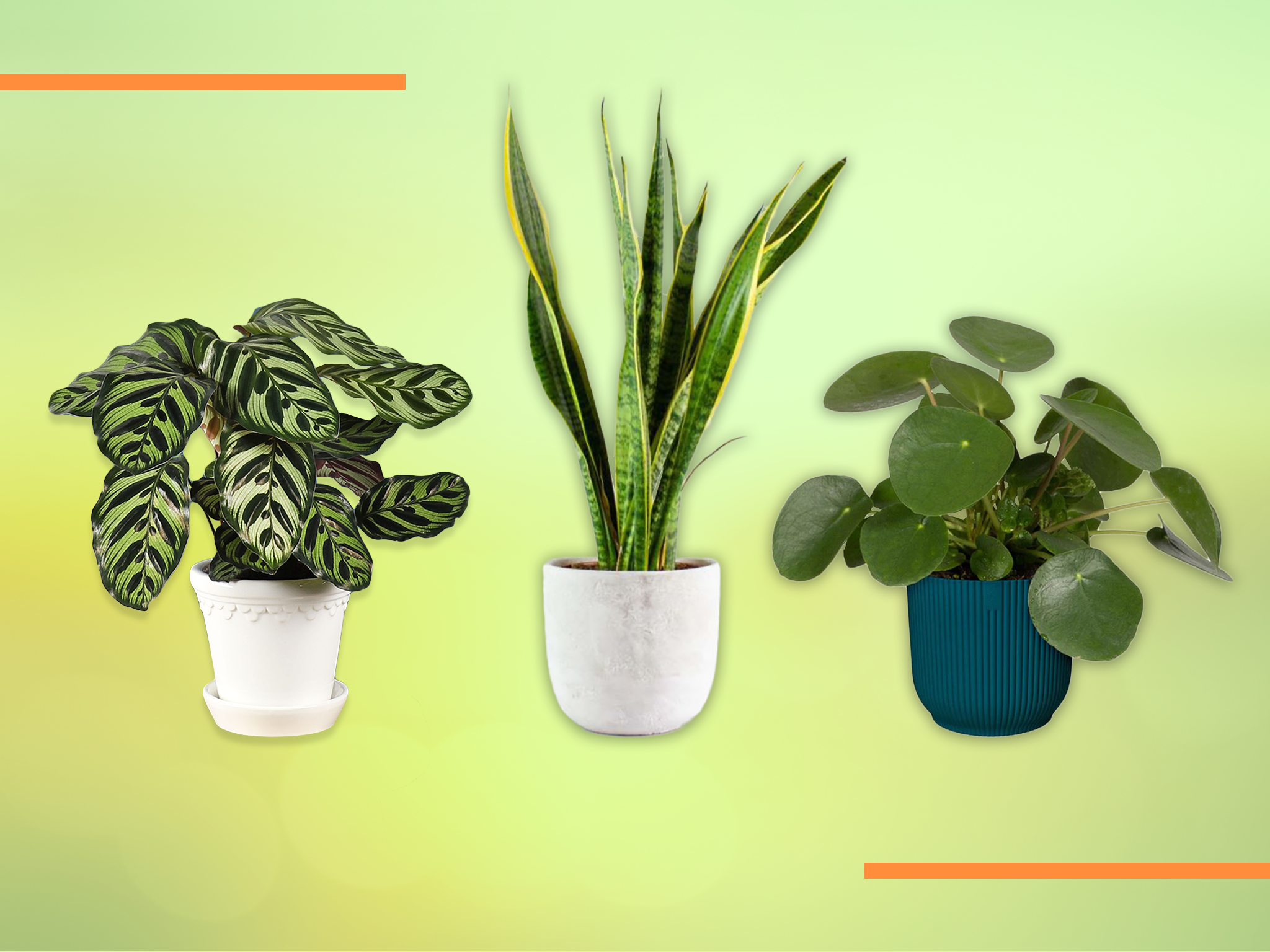
If your living space is feeling a little drab, there’s no better way to inject a splash of colour and life than with luscious green leaves.
A great way to freshen up your environment, house plants come in a variety of forms, from towering jungle palms to tiny succulents with an option to suit every room, be it a sun-soaked conservatory or dimly lit office.
But besides looking cool and giving gardenless dwellers a chance to flex their green thumbs, there are many other reasons why adopting house plants is a good idea. While some simply provide visual interest, others have the ability to purify the air and absorb pollutants, as well as help boost your mood and improve anxiety. In fact, one study in the Journal of Physiological Anthropology found that interacting with indoor plants can reduce both physiological and psychological stress.
But let’s be honest – most of us aren’t plant experts, and have no idea where to start when it comes to choosing the right one, or knowing how to properly care for them. If you fall into this category, fear not, because it’s easier than you think to cultivate your own collection of handsome green leaves.
The thing to remember when it comes to plants is that they were not all born equal and all have slightly different needs. So, make sure to consider the type of environment a plant needs to flourish. Next, you need to perfect your watering routine and, while it’s vitally important to remember to give them a drink, you should also note that doing so every day could be just as detrimental as not watering it at all. As a rule of thumb, the best way to know when your plant is thirsty is to put your fingers in the soil – if it’s dry, then your plant needs watering.
Read more:
How we tested
Whether you want to become a fully-fledged indoor jungle-cultivator, or are simply looking for something to brighten up your desk, we’ve rounded up a selection of the best houseplants to buy online, taking careful consideration of each plant’s benefits, toxicity levels to children and pets, and diva credentials.
The best house plants for 2022 are:
- Best overall – Patch Plants big Ken: From £50, Patchplants.com
- Best for beginners – Crocus Chinese money plant: £9.99, Crocus.co.uk
- Best cactus – Beards & Daisies fishbone cactus: £12, Beardsanddaisies.co.uk
- Best for air quality – Bloombox Club snake plant laurentii: £17.99, Bloomboxclub.com
- Best for plant pros – Bloom & Wild rattlesnake plant: £55, Bloomandwild.com
- Best low maintenance plant – Patch Plants Xena: £10, Patchplants.com
- Best retro plant – M&S large ficus rubber plant: £28, Marksandspencer.com
- Best for bookshelves – Beards & Daisies string of hearts: £16, Beardsanddaisies.co.uk
- Best for bathrooms – Beards & Daisies calathea makoyana: £19, Beardsanddaisies.co.uk
- Best for stylish homes – Bloombox Club musa dwarf cavendish banana: £11.99, Bloomboxclub.com
Patch Plants big Ken

Best: Overall
Rating: 10/10
- Air purifying: Yes
- Pet/baby safe: Yes
- Care: Medium light and weekly watering
Otherwise known as a kentia palm or howea forsteriana, this striking plant is a brilliant all-rounder that promises to make a huge impact on any room in your home. We tried one of the larger sizes, which sits pride of place in our dining room and has become quite the conversation topic with visitors.
Easy to care for, with impressive fresh green leaves that fan out, it can tolerate most conditions but will be happiest in a position that gets lots of indirect sunlight. When it comes to watering, kentia palms only need a drink when the soil is dry to the touch, which tends to be around once a week. However, it also appreciates humid environments, so if you want to keep its leaves looking healthy it’s worth giving them a mist a couple of times a week.
While it has simple needs, this plant should be at the top of anyone’s wishlist who is looking to create their own indoor jungle, but beware, while it is a slow grower that can take decades to peak, it can reach a maximum height of 10 metres. This plant has more than just good looks to offer, too, as it’s great for improving air quality by removing toxins such as formaldehyde, ammonia and carbon monoxide from the air.
Crocus Chinese money plant
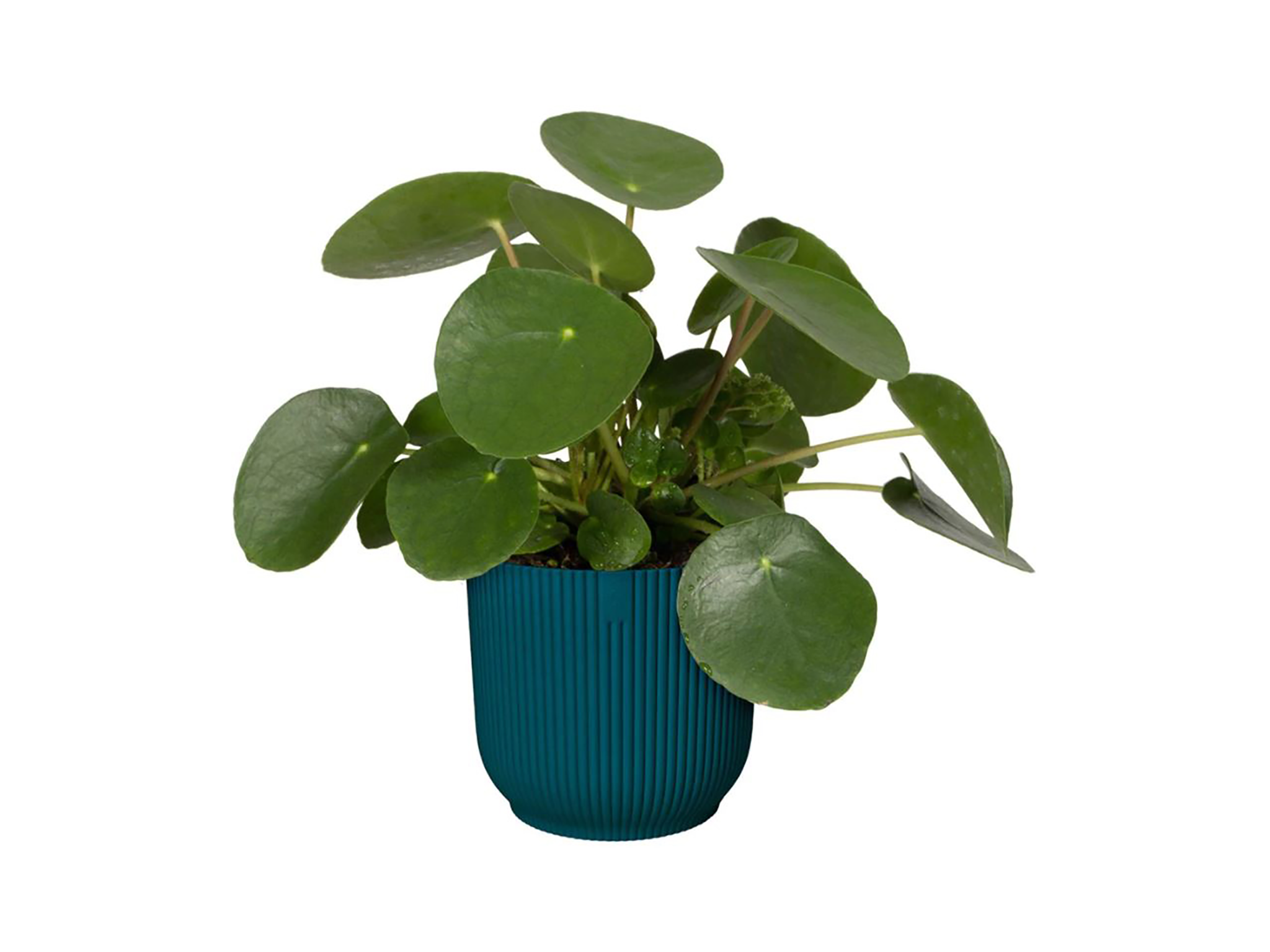
Best: For beginners
Rating: 9.5/10
- Air purifying: Yes
- Pet/baby safe: No
- Care: Most light conditions and light watering
If you’re worried about the responsibilities of becoming a plant parent, we recommend picking up a succulent as a starter. While they are available in a variety of colours, shapes and textures, our succulent of choice is the Chinese money plant (pilea peperomioides).
It has perfectly rounded, coin-shaped leaves on long, thin stems, making it a great decorative addition to any home. It’s also said that this plant can bring good luck and good fortune to its owner – though we’ve yet to reap said benefits.
Incredibly low maintenance, the Chinese money plant is designed to make your life easier. Its thick, fleshy leaves retain water better than others, meaning even the most forgetful among us will be able to keep it alive – just make sure not to neglect it completely by giving it a drink whenever the soil feels dry.
The house plant also loves being in a bright spot, and while it can tolerate partial shade, it will grow towards light, so if you want it to develop evenly it’s worth rotating the pot every few days. It will also thank you for a monthly feed with half-diluted liquid fertiliser in the warmer months.
Beards & Daisies fishbone cactus
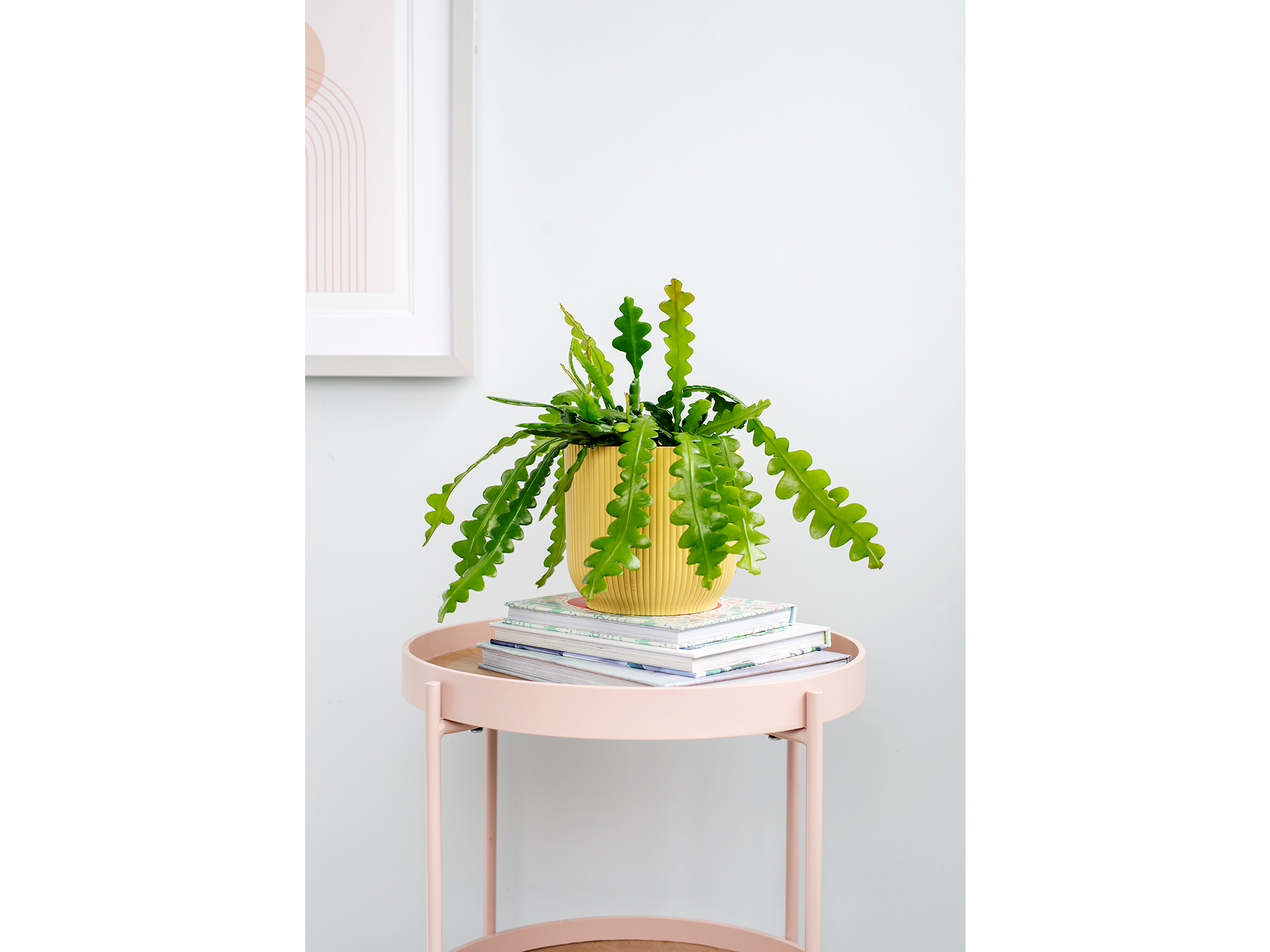
Best: Cactus
Rating: 9/10
- Air purifying: Yes
- Pet/baby safe: Yes
- Care: Bright light and light watering
It’s clear to see where this unusual plant, which originates from the rainforest of Mexico, gets its name. Also known as an epiphyllum anguliga, the fishbone cactus has wiggly, flat stems that resemble, you guessed it, a fishbone and it’s an ideal choice for anyone who loves cactuses but doesn’t have the right conditions to keep the typical desert dweller alive.
A breeze to look after, it enjoys plenty of light but not too much direct sun, so make sure to place it in a bright room away from a window for best results. When it comes to watering, it’s not a very thirsty plant, meaning you can let the soil fully dry between drinks and should be wary of soaking it too much in autumn and winter. It’s also important not to use water that’s too cold, as this can shock the roots.
We love the unique stems of this cactus, which mean it works just as well in a planter on a shelf or a hanging pot as, although they grow upwards at first, the tendrils quickly trail down and will grow as long as you let them. But, if you ever think it’s getting a bit too long, the great thing is that you can cut back the stems without causing the plant any harm. Low maintenance and a welcome touch of colour and texture to any room, the stunning foliage of this cactus is something to admire.
Bloombox Club snake plant laurentii
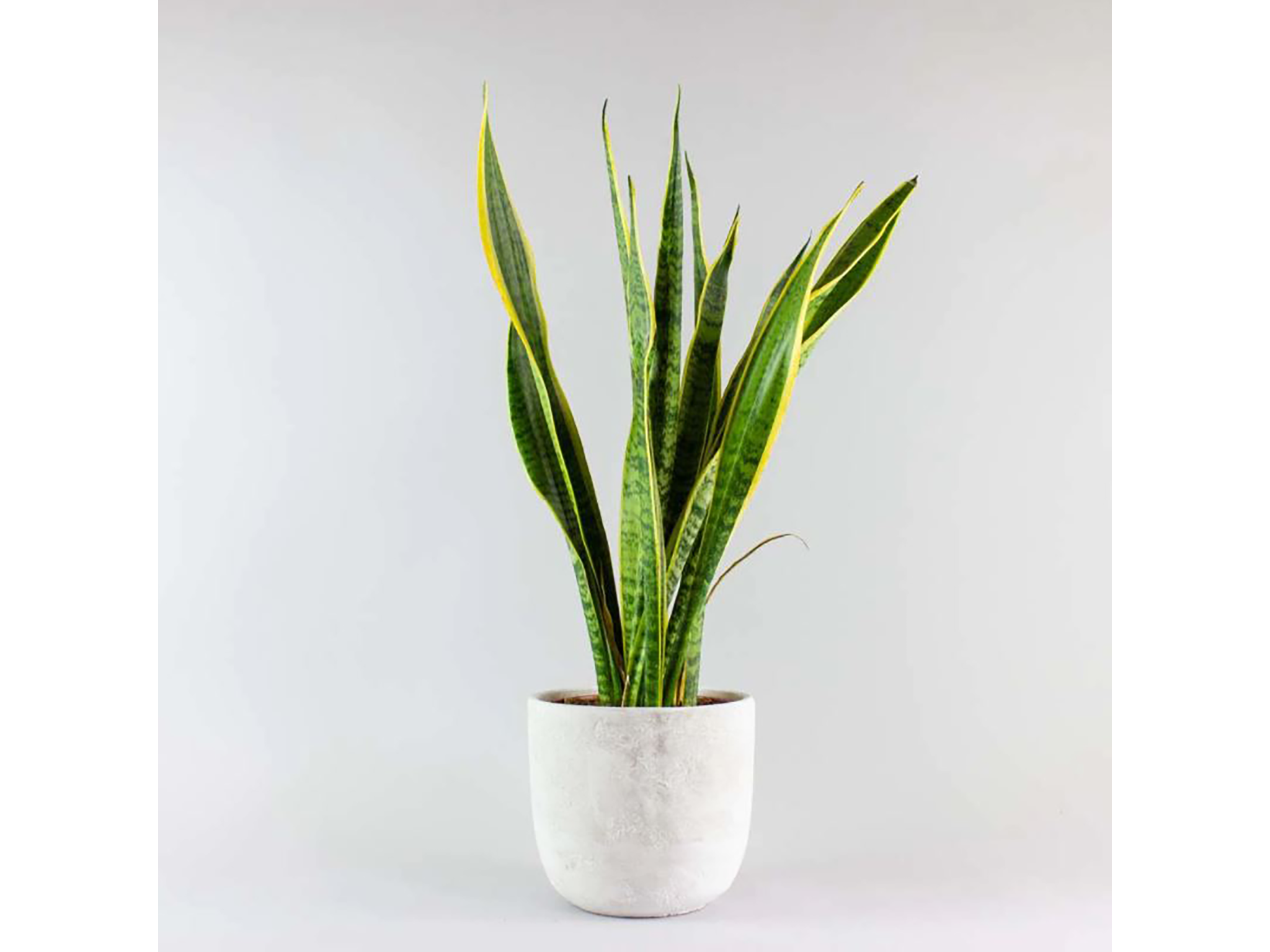
Best: For air quality
Rating: 8.5/10
- Air purifying: Yes
- Pet/baby safe: No
- Care: Most light conditions and light watering
This plant has an impressive list of nicknames, including “viper’s bowstring”, “tiger’s tail” and “mother-in-law’s tongue”, owing to its spiky green and yellow stems. But whatever you call it, we’re sure that you’ll love it.
Notoriously hard to kill, the snake plant is super-tough and doesn’t need much watering, making it a great option for new plant parents. It will thrive in most light conditions, though you should avoid placing it in windowless rooms or in direct sunlight for more than four hours, as you’ll run the risk of its leaves drying up. The snake plant also doesn’t need much water – simply give it a drink when the soil feels dry, which is usually every two to three weeks, and even less in winter.
Aside from its hardiness, what makes this plant so great is that it has a NASA-approved magic power. One of the best purifiers, it absorbs harmful toxins from the air and releases lots of oxygen at night, which is said to help you drift off to sleep and lessen the impact of airborne allergens like dust. To make the most of its toxin-fighting abilities, keep your plant free of dust by giving its textured waxy leaves a wipe every now and then.
Bloom & Wild rattlesnake plant
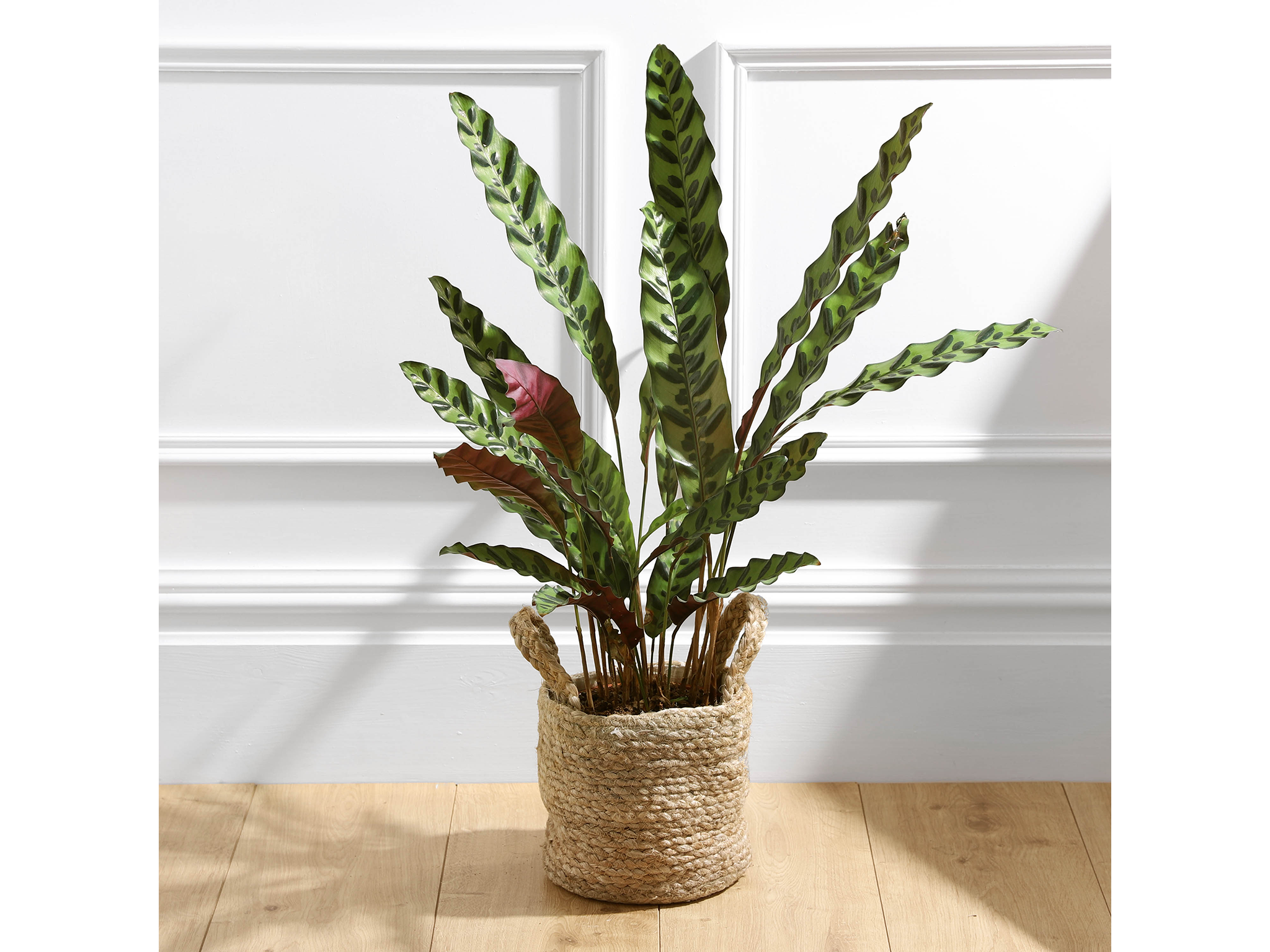
Best: For plant pros
Rating: 8/10
- Air purifying: Yes
- Pet/baby safe: Mildly toxic
- Care: Medium light and regular watering
Rattlesnake plants, otherwise known as goeppertia insignis or calathea lancifolia, can be tricky plants to nurture, so this is one best kept for those with expert green thumbs. This is because it has very particular requirements when it comes to heat, light and moisture.
Originally from Brazil, the rattlesnake loves tropical conditions, meaning it needs a good amount of indirect light – a spot near the window is best – constant damp soil and lots of humidity. All this combined means it’s probably best placed somewhere steamy, like a bathroom, or you will have to mist it regularly to avoid the leaves browning.
A real eye-catching plant, the leaves of the rattlesnake have an interesting look with a long rippled shape that’s marked with dark green spots and contrasting undersides in deep purple tones. As part of the calathea family, which are known as prayer plants, you’ll also notice that the leaves move up at night and lower during the day in accordance with its circadian rhythm – genius. While the rattlesnake needs more attention than most in order to thrive, you’ll certainly be rewarded if you put in the work and we love having it on display in our home.
Patch Plants Xena
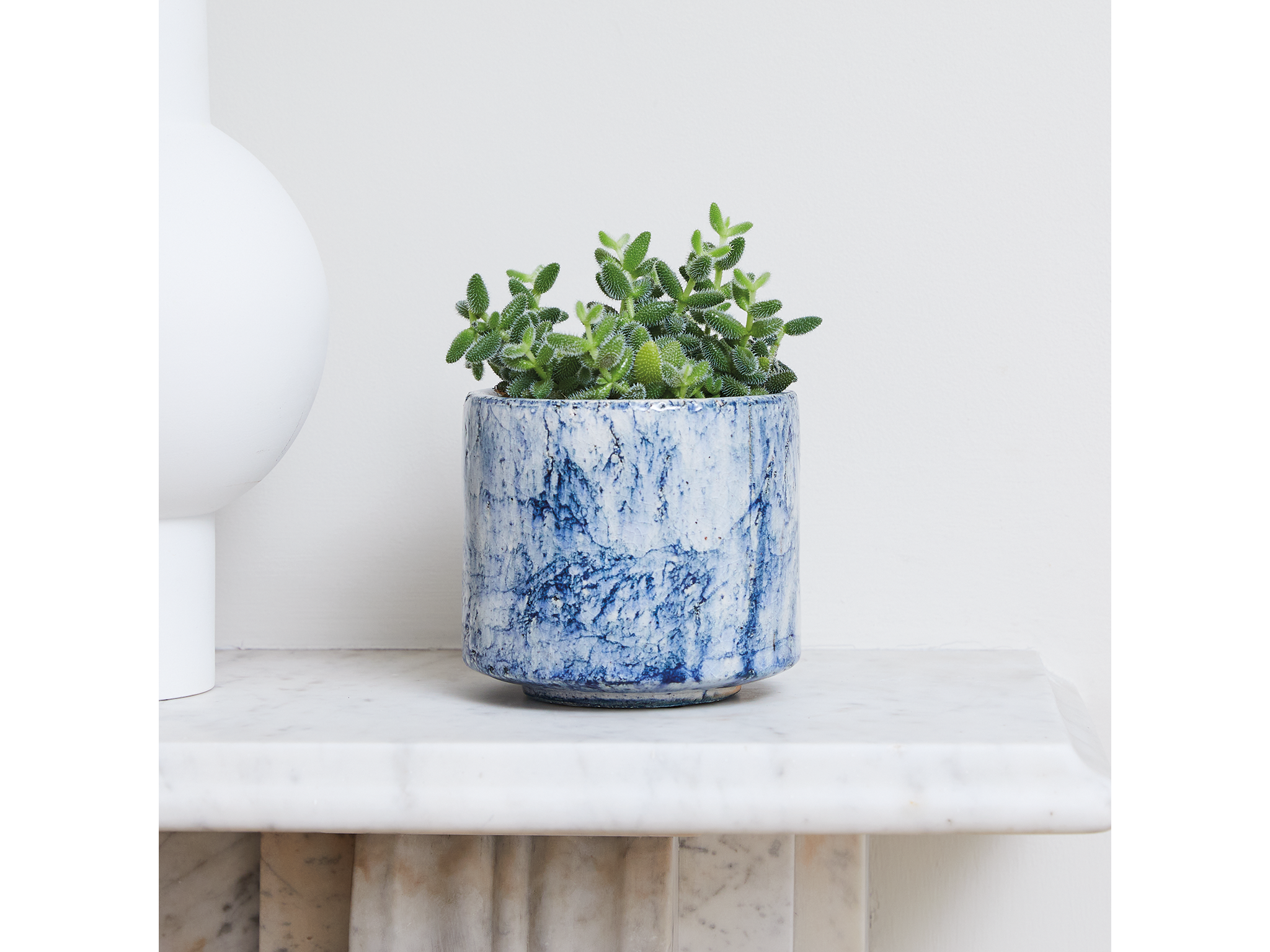
Best: Low maintenance plant
Rating: 9/10
- Air purifying: Yes
- Pet/baby safe: Yes
- Care: Bright light and light watering
If you’ve tried and miserably failed to care for trickier plants, consider this unique succulent, which is one of the easiest to help thrive. Its botanical name is delosperma echinatum, which means “prickly seed”, but because of its small leaves that feature spikes, making it look like a bunch of tiny gherkins, some people also refer to it as a pickle plant – adorable. Plus, in warm months, daisy-like yellow flowers can bloom, but don’t be disappointed if yours doesn’t, as it’s less common for those kept indoors.
A tender, shrubby plant with slender, upright or trailing stems, it’s really easy to look after. As a succulent, it needs minimal water, meaning it only needs topping up lightly when the soil feels fully dry, and it enjoys bright but indirect sunlight. A native of the eastern cape of South Africa, it typically grows at quite high altitude, which makes it pretty tolerant of colder temperatures, so you don’t need to worry about placing it in a room that’s humid or giving it a spritz. We found this plant a cinch to look after and, because it’s nice and compact, it instantly adds interest to windowsills and shelves that might otherwise get overlooked.
The Xena is out of stock at the moment, but Patch Plants promises it will be back soon and you can sign up to receive an email when it does.
M&S large ficus rubber plant

Best: Retro plant
Rating: 9/10
- Air purifying: Yes
- Pet/baby safe: No
- Care: Medium light and light watering
A 1970s classic, the rubber plant is ideal if you’re looking for something that will add a retro vibe to your home. With its broad, glossy leaves that protrude from sturdy stems, it makes a great ornamental house plant and gets its name from the milky-white latex sap that it produces once matured, which was once used to make rubber.
Aside from its striking appearance, the rubber plant is relatively easy to care for and can be quite forgiving if you were to accidentally neglect it. For best results, you should water it weekly through the warmer months or whenever the top two inches of soil are dry and make sure to place it in a bright room away from the window.
However, because its natural environment is in southeast Asia, it does prefer a humid environment, so it’s a good idea to spray the plant with a mister every few days and dust its large waxy leaves with a damp cloth every now and then. If cared for properly, it’s also a pretty fast grower, so be prepared for it to reach a height of around 3m. A brilliant plant for creating a focal point, we love that it can fill any corner of a room quickly and adds an instant dose of nostalgia for those obsessed with all things Seventies.
Beards & Daisies string of hearts
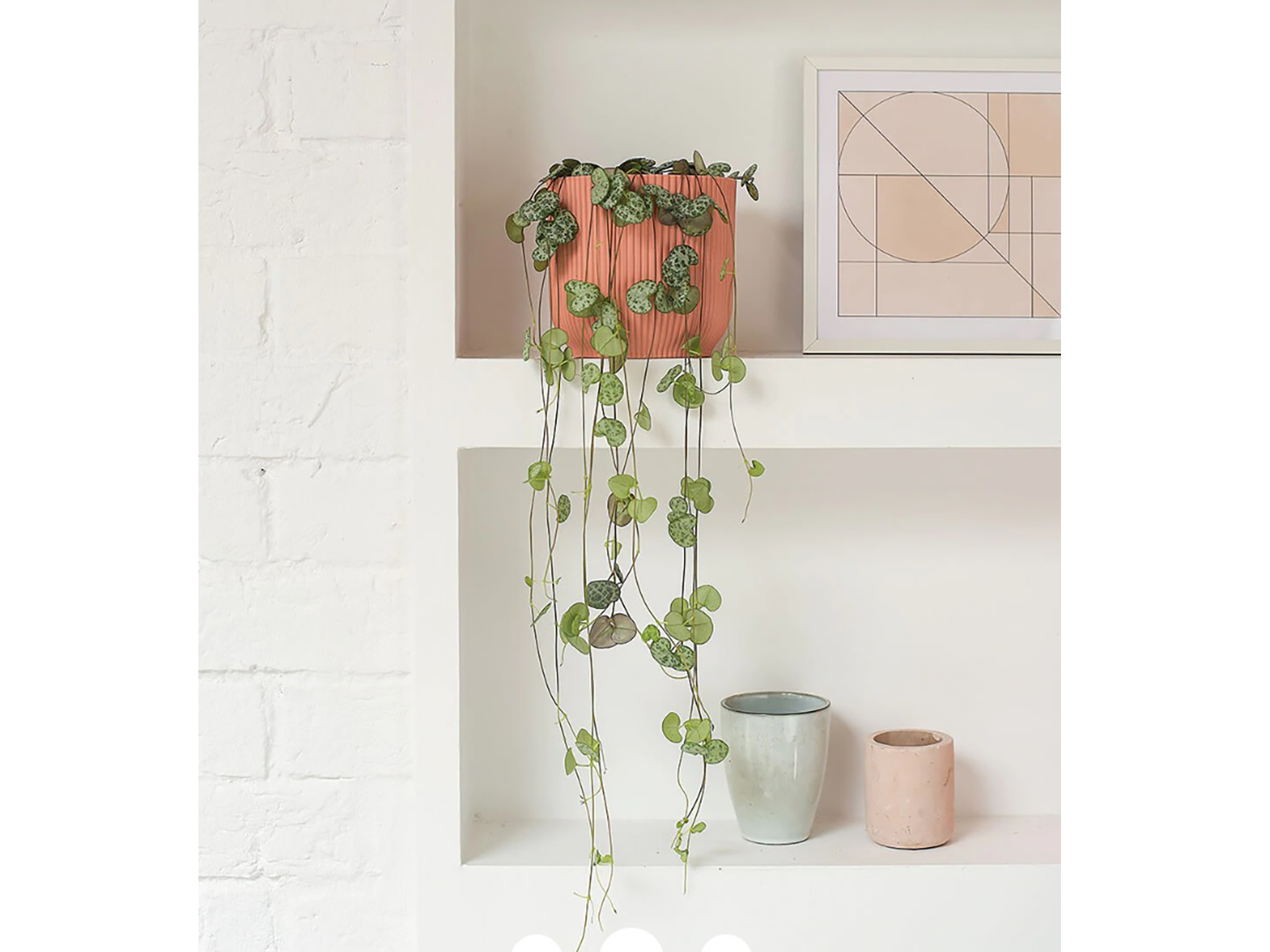
Best: For bookshelves
Rating: 9/10
- Air purifying: Yes
- Pet/baby safe: Yes
- Care: Medium light and moderate watering
While bookshelves serve as practical storage, they’re also the perfect platform for showcasing plants that cascade out of their pots. One of our favourites is the ceropeegia woodii – also known as the “string of hearts” – which grows pretty heart-shaped leaves on long vines, hence the name.
Ready to take pride of place in your home office, this plant already comes with long vines, measuring approximately 25cm but, if it’s given conditions it loves, they can grow as long as two metres in length. If you notice leafless stems getting too long though, don’t be afraid to prune them with a pair of clean secateurs.
Speaking of its favourite conditions, the string of hearts is low maintenance. It doesn’t like to be soggy, so water sparingly and allow the soil to dry out between drinks. It’s also pretty easygoing when it comes to lighting and, while it prefers bright, indirect light, it will still do well in moderate shade. If you want to give your plant a boost though, you can help it grow by giving it a feed with liquid fertiliser once per month in spring and summer.
Beards & Daisies calathea makoyana
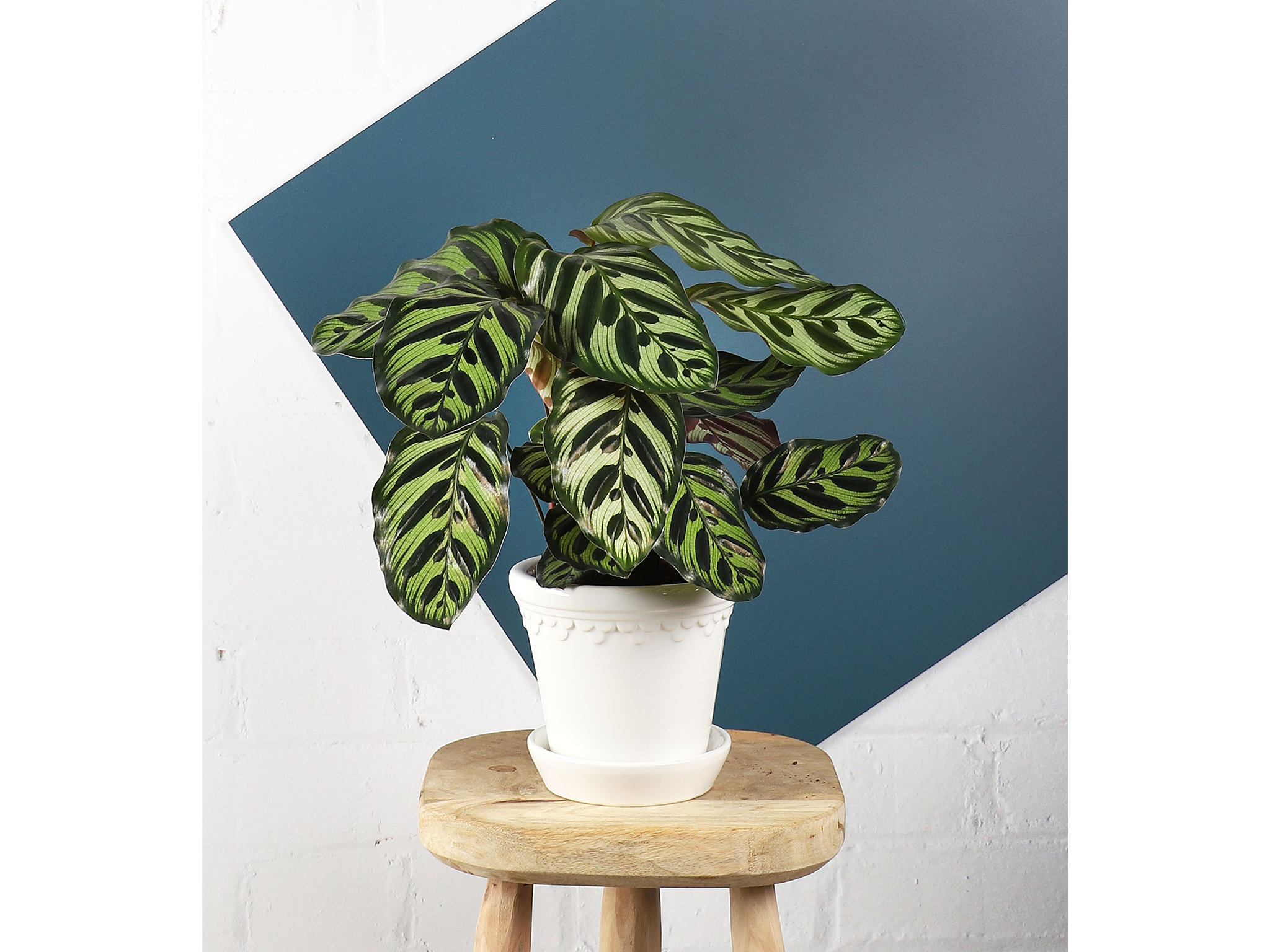
Best: For bathrooms
Rating: 8.5/10
- Air purifying: Yes
- Pet/baby safe: Yes
- Care: Medium light and humid conditions
Otherwise known as a peacock plant, this one is a real show-off. Just like the striking bird, the calathea makoyana stands out from the crowd thanks to its coloured leaves that look as though they’ve been painted with green brushstrokes, while the underside is tinged with red. As a member of the prayer plant family, it also folds its leaves up when darkness falls in the evening and open ceremoniously by day to let the light shine through them.
When it comes to care, this plant likes lots of indirect light (too much sun will cause its colours to fade) and humid conditions, which makes it a great choice for bathrooms. However, if you had your heart set on it sitting centre stage in a different spot, simply remember to mist it regularly to avoid the leaves from browning.
It isn’t the easiest plant to look after and can be slightly temperamental, especially when it comes to watering. You should always give it a drink when the top two inches feel dry to the touch and avoid using tap water where possible, as it can be sensitive to fluoride.
Bloombox Club musa dwarf cavendish banana
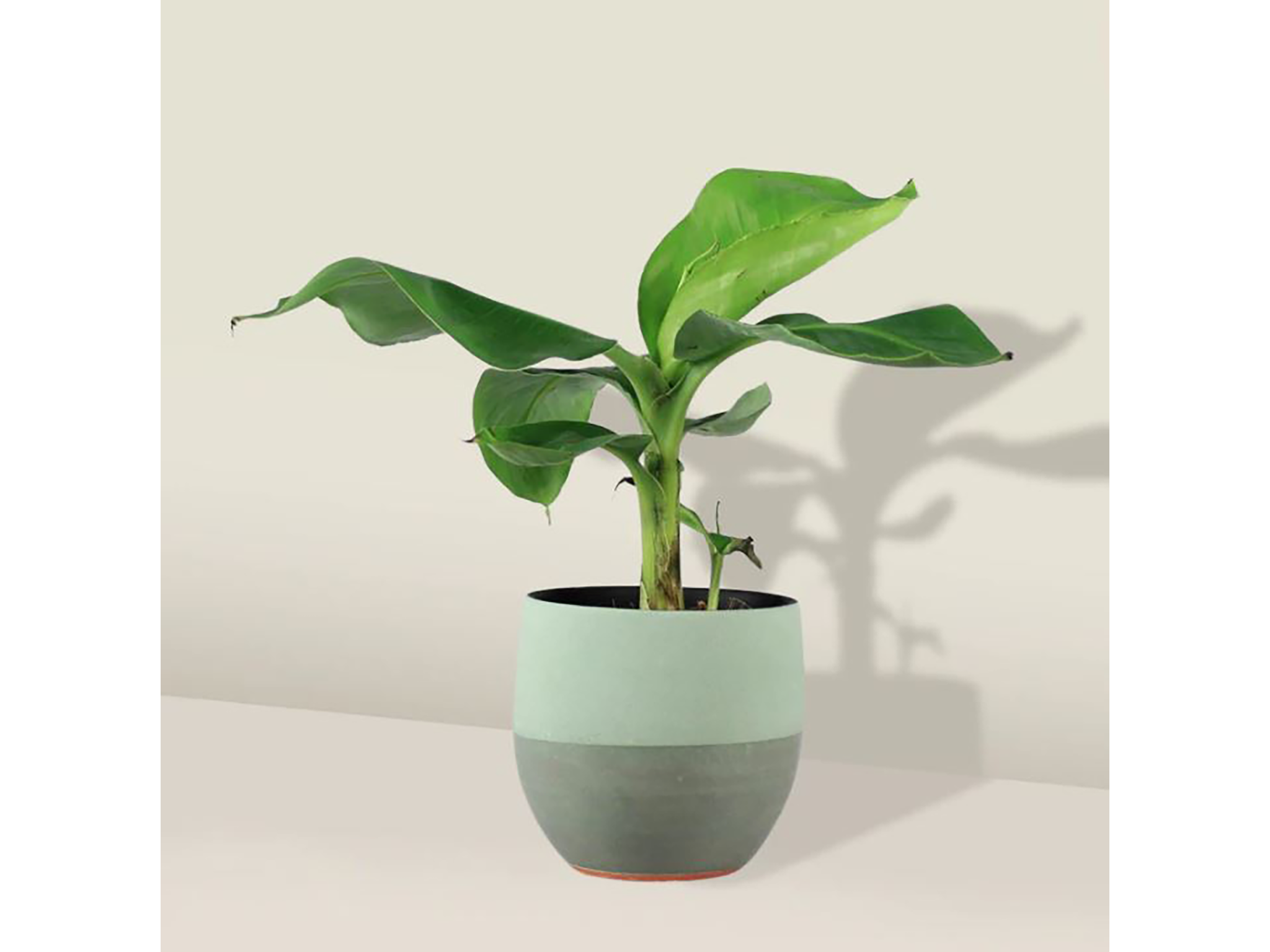
Best: For stylish homes
Rating: 8.5/10
- Air purifying: Yes
- Pet/baby safe: Yes
- Care: Bright light and regular misting
The Musa dwarf cavendish banana is the poster boy of millennial-beloved plants, and it’s not hard to see why. Named after William Cavendish, the sixth Duke of Devonshire, this particular species doesn’t grow very tall, maxing out at around 3m, but its leaves are pretty large, making it a good one for homes with lots of space.
Ideal if you’re looking to make a real statement, its leaves feature unique blotches that gradually disappear as it matures, and it will reward you with lots of new shoots during its growing phase. A word of warning though, this plant is kind of high maintenance.
It prefers to be in a warm spot with bright, indirect light and likes its soil to stay slightly moist, so requires regular watering. Plus, its leaves are extremely fragile, so it is rare to find them without any imperfections. Don’t let that put you off though, you just need to remind the plant of its jungle home by misting it regularly to stop the leaves from tearing. It’s also worth noting that, despite its name, this banana plant won’t fruit.
The verdict: Indoor house plants
For a plant that’s truly got it all, we highly recommend investing in a kentia palm from Patch Plants. Not only does it look seriously cool, but it’s air-purifying, pet-safe and can tolerate some neglect, making it a low maintenance and trouble-free choice for experts and novices alike. Ours sits pride of place in the corner of the dining room, making it instantly feel more sophisticated and welcoming.
If you’re after something a little more understated though, Urban Outfitter’s string of plants is a must-have trailing plant, while the Chinese money plant is a superb all-rounder that even the most unschooled plant parent will be able to help flourish.
Voucher codes
For the latest discounts and other homeware offers, try the links below:
To be the best plant parent you can be, read our guide to bringing the outdoors in, according to experts
